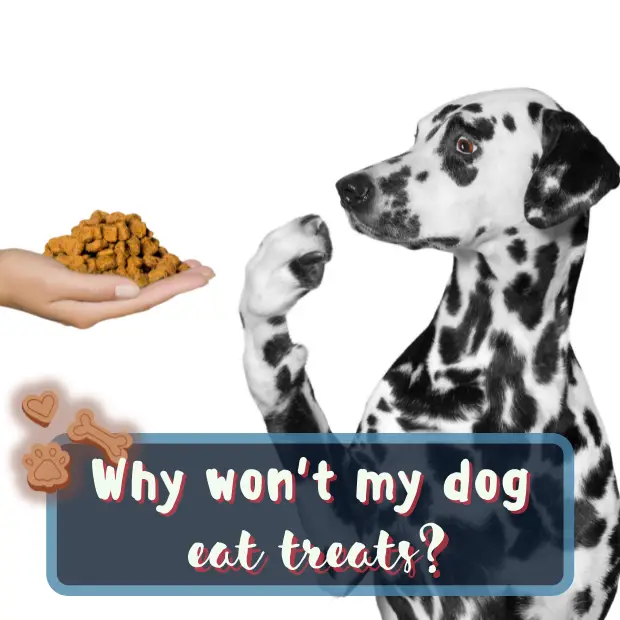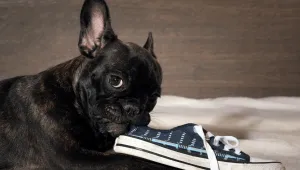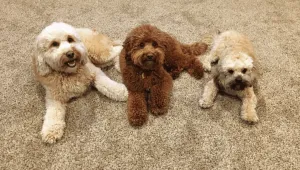We all love taking our dogs out for a walk. It’s a chance for us to get some exercise and spend time with them. But some pet owners find their dog won’t eat treats when outside the home!
Treats are a great training tool for positive reinforcement trainers with dogs who are trained without aversives, punishment or force. It can be a potential issue if your dog isn’t interested in eating and you want to train loose leash walking!
Here are a variety of reasons your otherwise normal dog might not want to eat on a walk and what to do about it.
Table of Contents
ToggleYour dog is full.
This is especially common in those who are fed before their walks. If they have just eaten, this will affect their appetite and they won’t want any more when out on the walk. If this sounds like your situation, then it’s best to feed them an hour after their walk instead of beforehand. A meal within an hour of a walk can be a cause of bloat or gastric torsion, so it’s best not to take your pooch out for a walk straight after a meal.
Free feeding is also a common cause of them refusing titbits when out on walks. This is where a bowl of food is always available and kept topped up so the dog can help themselves whenever they want it. If they have constant access to food, then they are unlikely to feel particularly motivated by it, as they could be constantly snacking and never get hungry between meals.
Your dog doesn’t feel safe in the environment.
Your pup may refuse treats when out on a walk if they don’t feel safe in the surrounding environment. If you’re near roads or other busy places, then your furry friend might be feeling anxious or simply scared.
When a mammal is stressed or frightened, this causes digestive issues, as the fight-or-flight hormones direct blood flow towards the large muscles in our limbs and away from the gastrointestinal tract… and this can cause loss of appetite. If I were to offer you your favourite chocolate bar as you were running away from a tiger, you probably wouldn’t feel inclined to take it as you’ve got other priorities in that moment!
Your dog is overexcited.
If they’re somewhere new or stimulating, they may be so focused on taking everything in that they don’t want to stop and eat! If this is the case, and they’re overstimulated or overexcited, then try to find quieter places for your walks where your pal can relax and give you some focus.
Your dog is thirsty.
Many dogs will refuse to eat if they are thirsty, particularly if what you’re offering is dry. It’s worth carrying some drinking water to offer them.
Your dog doesn’t like the texture of the treats.
Some dogs don’t like certain textures when they’re out and about. Crunchy things may be just too much effort to chew on, particularly for seniors who may be more likely to have bad teeth! In this case, it might be better to try something softer, such as small pieces of cheese, or cooked food such as chicken or sausage.
You can also try to mix up the texture and taste of the types of food so that Fido doesn’t get bored.
Squeezy cheese in a tube can be another good option when you want to reward your obedient dog on a walk, some pups prefer to lick at a reward instead of eating something solid and licking is also another calming activity that will help them to stay relaxed.
Make sure your treats are fresh as a picky dog won’t eat spoiled food that will give them an upset stomach and who can blame them?!
Your dog doesn’t want to take treats from your hand.
I’ve known puppies who have struggled to take food from hands because they just don’t know how and this is sometimes a skill we teach just like any other.
Some prefer to take food from the floor, or to catch it, than take it from your hand whilst out on a walk. Bring tasty morsels that are easy to break up to sprinkle on the ground to encourage your pooch to have a sniff whilst they’re eating.
Sniffing is a calming activity that helps dogs relax, so if your furry friend is keen on having a good sniff whilst they’re out on a walk this may be due to them needing a moment to help them process everything they’re being exposed to.
If I don’t allow my spaniel to sniff whilst we’re on a walk he flinches at passing traffic after a few minutes. Sniffing is his management tool for his stress levels so he can cope with everything that’s going on around him.
Start training your dog to catch titbits at home where it is less distracting and they are relaxed. I like to use the cue “1, 2, 3, catch” so that as soon as they hear that phrase, they know to pay attention because something tasty is coming soon. Teaching your dog this game in the house and garden, until they reliably offer the trained response, will mean you can begin using it out on walks.
Your dog is ill.
If your pup’s lack of appetite means they sometimes go days without food, your vet may need to be consulted to rule out whether the problem is caused by illness. And obviously, if your dog has vomiting and diarrhea, seek proper medical advice promptly.
Whatever the reason they won’t eat whilst on the go, it’s important to be patient and keep trying until you find something that works! Your dog will appreciate all the effort you’re putting in to make their walks more enjoyable for them. Making it easier for them to eat out and about will mean you can train your dog anywhere.
Thanks for reading all the way to the end and I hope you found this useful. If your dog refuses food outdoors read this article about what to do if your puppy doesn’t enjoy walks.







